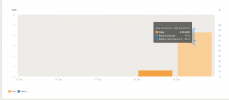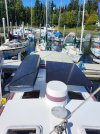Submariner
Channel Surfing
- Joined
- Feb 2, 2020
- Messages
- 1,520
- Location
- Everett, WA
- Website
- www.letsgochannelsurfing.com
- Fluid Motion Model
- R-27 (Outboard)
- Hull Identification Number
- FMLT2702C021
- Non-Fluid Motion Model
- https://tinyurl.com/yrv84xdm
- Vessel Name
- Channel Surfing
- MMSI Number
- 368187810
briandunnington":3qyie2z6 said:Submariner":3qyie2z6 said:If you're not sure what your average consumption is on your boat assume 80-100ah a day as a starting point. The cabin refrigerator will consume about 20-30ah, daily. The cockpit refrigerator is about 12-20ah daily.
Some us are 'lucky' enough to have boats so small that they only have one refrigerator. Look at all that power that we save!
We love our cockpit refrigerator. It's our drink cooler so we don't usually carry an ice chest onboard. But having that cockpit refrigerator there is an electrical tax we pay, for sure.






